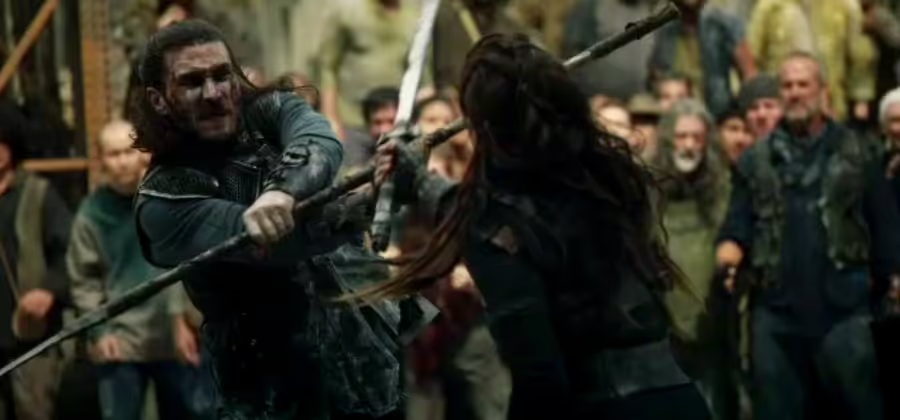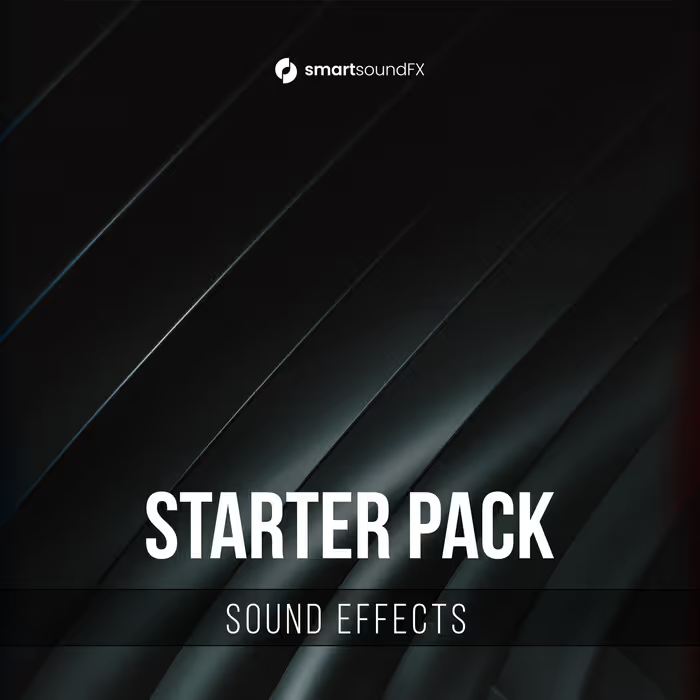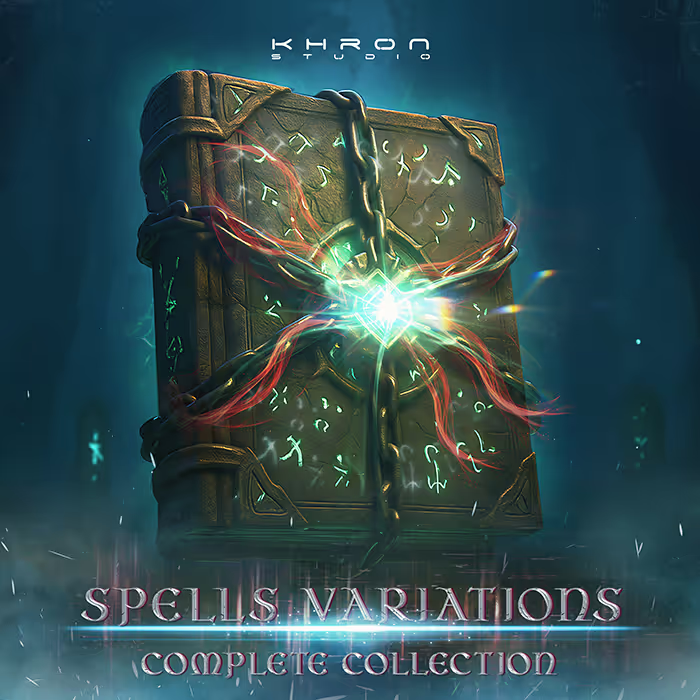He also shares two rare, powerful-sounding behind-the-scenes listens to snippets of the show with just his sound design. This post originally ran on Peter’s own blog, and is reprinted here with his kind permission. Here’s Peter Lago, on the sound for ‘THE 100’:
The trailer for The 100, season 1
I have had the privilege of being part of the dynamic and creative team on the CW’s THE 100, serving as sound designer on 44 of the 45 episodes. It has been an exciting and challenging job, but one that has required quite a bit of soul-searching along the way on my part in order to bring out the best sonic fingerprint possible. With sound editorial and mixing on three seasons complete, I would like to share a little bit about my thought process, motivations and discoveries with regard to the soundscape for THE 100.
Just as actors do, all of us craftspeople (writers, directors, cinematographers, editors, Et al.) have to dig into our arsenals of experience in order to breathe exuberant life into our individual cogs in the giant wheel that is THE 100. With regard to sound design, there are a number of things that inform and influence my work. For THE 100, it began with reading the first novel by Kass Morgan, watching the pilot episode (which I did not work on), and reading a handful of the show’s scripts.
The show was definitely steeped in sci-fi, but with an overall sense of the dilapidated, the run-down and melancholy
This provided a sense of the world I was supposed to build and expand upon. It also gave me initial impressions on specific sound design elements (technology, creatures, mood, etc.). The show was definitely steeped in sci-fi, but with an overall sense of the dilapidated, the run-down and melancholy. It felt scary, yet rambunctious, exciting and big. Old and new. Unique. Okay, these were broad-stroke concepts, but enough for me to get started.
A scene from the show with just sound design
Sound editorial for each episode normally begins with a spotting session, where a number of our key post production crew meet and discus specific issues, ideas, concepts, and approaches to making the episodes sonically awesome. I don’t normally go to these sessions, as my editorial schedule is pretty full, but I do get the notes from my sound supervisor, Charlie Crutcher (who also shares my enthusiasm for this show).
The picture cut is also a vital component in informing my approach to design, as the picture editors are in fact the architects who sculpt and structure the footage into a cohesive and artistic representation of the original script.
The overall sound design approach became bigger, bolder, more active and bombastic. Hard-hitting and violent.
They provide a timing, a heartbeat if you will, and I feed off their impressions. So far, so good. The shows were coming in, and we were all good.
But at some point in the first season, it all went to hell. Things became darker, bleaker, harder, painful and threatening. The faceless enemy proved terrifying and haunting, and the Dropship became a claustrophobic prison in a Brave New World. It all changed, and I had to adjust my thought process accordingly. And it was exciting. The overall sound design approach became bigger, bolder, more active and bombastic. Hard-hitting and violent. Okay, cool. I can do that.
The final episode of Season One was epic for me, but once again, just as I’d settled into my design groove, and just as we were about to wrap up on that first season, a massive cliffhanger presented a potential shift in the upcoming season’s sound design.
Mount Weather changed everything.
Another scene from the show, with just sound effects, Foley & Backgrounds
It was clean, pristine and not so mean (at first). Woah. Totally different than the big, bombastic First Season. It was at that point that I had a sudden epiphany about what THE 100 really was, and what I could have been defining my editorial style as during that first season… and it drastically redefined my approached to the sound design on both Seasons 2 and 3.
THE 100 is pulp fiction.
Not the incredibly awesome 1994 Quentin Tarantino film, but the grimy, shocking, violent and cynical gangster/crime paperbacks of the 1930s.
Seeing and hearing the show in this fashion suddenly opened my eyes to a million thing I should have seen/heard from the start
Those short, dime-store rags were chock full of gritty and hard-hitting, politically and socially questionable storylines, with colorful and shady characters, mayhem, murder, lust, revenge and not-so-happy endings.
Seeing and hearing the show in this fashion suddenly opened my eyes to a million thing I should have seen/heard from the start. I’ve always loved old, gritty black-and-white gangster films, as well as the film of Kurasawa, and the more modern martial arts films that have come out of Hong Kong as of late. Needless to say, my creative juices started flowing and I was extra-motivated to dive into this further. I’ve always wanted to cut on something “grindhouse-y”, and suddenly, THE 100 became just that. Suddenly Lexa wasn’t just the Commander; she was a bad-ass Amazon warrior queen with ninja skills. Titus wasn’t just the Flamekeeper; he was a fighting Shaolin monk. Lincoln and Bellamy weren’t men; they were Titans. Raven, Octavia, Miller, Harper, Monty, Jasper… they were The Avengers. And why not?? Things sound better when they’re supercharged.
In the real world, no one would be able to survive the harsh physical/emotional damage and destruction everyone on this show sustained… and in this extremely short amount of time they’ve been on the ground? Less than a year? Ridiculous! But in a pulp world, it’s totally logical. All caution is thrown to the wind and it’s totally okay. This makes the approach to the series fun for me, and I took this as a cue to go big or go home. It’s a comic book. It’s a superhero tale. It’s a graphic novel (PLEASE!!). It’s pulp fiction.
This makes the approach to the series fun for me, and I took this as a cue to go big or go home
Furthermore, I came to realize that each season of THE 100 was in fact a self-contained volume of short stories in a hopefully much-broader collection of pulp stories set on Earth in the future.
No long, drawn-out, overly-inflated storylines, but lean, mean kick-ass tales of survival that come to an often blood or violent resolution before starting all over again the following season. Like The Martian Chronicles meets Mad Max meets Kill Bill.
PULP SCIENCE FICTION, if you will.
I love when a show can tell a strong and compelling multi-dimensional tale in a short number of episodes, and so far, this season has delivered with the hard-hitting, politically and socially-charged storylines, colorful and shady characters, mayhem, murder, lust, revenge and not-so-happy endings. Yes, this season has seen its share of controversy, and though totally heartbreaking to most of us, in the big picture, those moments of controversy are integral to the gritty pulp fiction genre. I’m not saying I agree or disagree with some of the story decisions, but man, what a ride! You gotta give the writers that much. City of Lights, ALIE, Skaikru history, Grounder religion, Commander lineage, nightbloods… All this and more to come… That’s a lot to chew on for 16 episodes (10 aired so far!), so I say we all just sit back and enjoy the craziness!
I always look forward to the sonic challenges presented in THE 100, and with each new season, I’ve been able to expand my editorial style and grow as an editor. I hope Season Four brings on a mountain of new, terrifying and delicious challenges for the extraordinary characters we love so dearly, and I hope I’m successful in making them sound good. Stay pulp, friends!
About Peter Lago
Peter Lago is a sound effects editor/designer with extensive experience in features, TV, documentaries, and new media. He has developed a strong reputation for delivering high quality, well-detailed and expressive tracks in a timely and efficient manner. Some of Peter’s credits include: The 100, The Shannara Chronicles, Arrow, Witches of East End, Sushi Girl, Climate Refugees and The Celestine Prophecy. Peter has received two MPSE Golden Reel awards for excellence in sound editorial.
Peter works out of the Warner Bros. Studio lot.
For more information, please visit Peter’s blog





